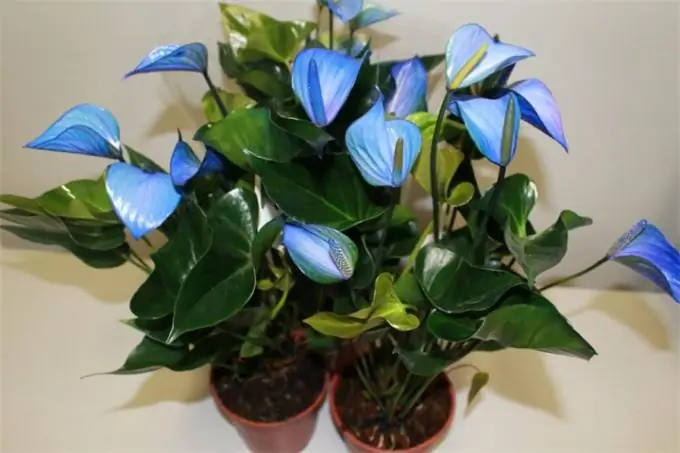Anthurium flower is a plant of tropical and subtropical rainforests of South and Central America, many species are cultivated as cut pot plants. Many varieties are known with different colors and shapes of the coverlet.

Anthurium is comparable in beauty and grace to the pink flamingo bird. Its leaves are of various shapes - from simple oval-elongated to complexly dissected. The inflorescence is an ear with a heart-shaped cover leaf. Flowers are bisexual, medium-sized, densely planted on the cobs.
Duration of flowering is from several hours to several days. The fruit is a juicy fleshy, sometimes variegated berry with seeds inside. Under natural conditions, the plant is pollinated by insects and wind; when grown in a room, artificial pollination is necessary. If a fruit appears at home, then as it ripens, it seems to be pulled out of the perianth and hangs on two thin hairs - this means the seeds are ready for sowing.
Anthurium is very picky about the soil. Its composition, in addition to sheet land, must include pine bark, charcoal, coarse sand, in a ratio of 5: 1: 1: 1, drainage is required. The soil mixture is desirable slightly acidic (pH - 4, 5-5.5), the pot is spacious, so that there is room for cuttings and aerial roots. A plant up to four years of age must be transplanted annually in the spring, and then after 2-3 years.
Plants are easy to care for - the optimum temperature for good growth is 18-22 ° C. The plant withers from bright sunlight, therefore semi-shading is preferable. Watered regularly with warm water, but do not fill it. When the soil becomes waterlogged, the roots rot and the plants die. Most species need irrigation, except those with velvety leaves.
From March to September, twice a month, fertilizing is done with mineral fertilizer (2 kg per 1 liter of water), they can be alternated with organic matter. Anthuriums are propagated by seeds, side shoots, cuttings, offspring and layering.






